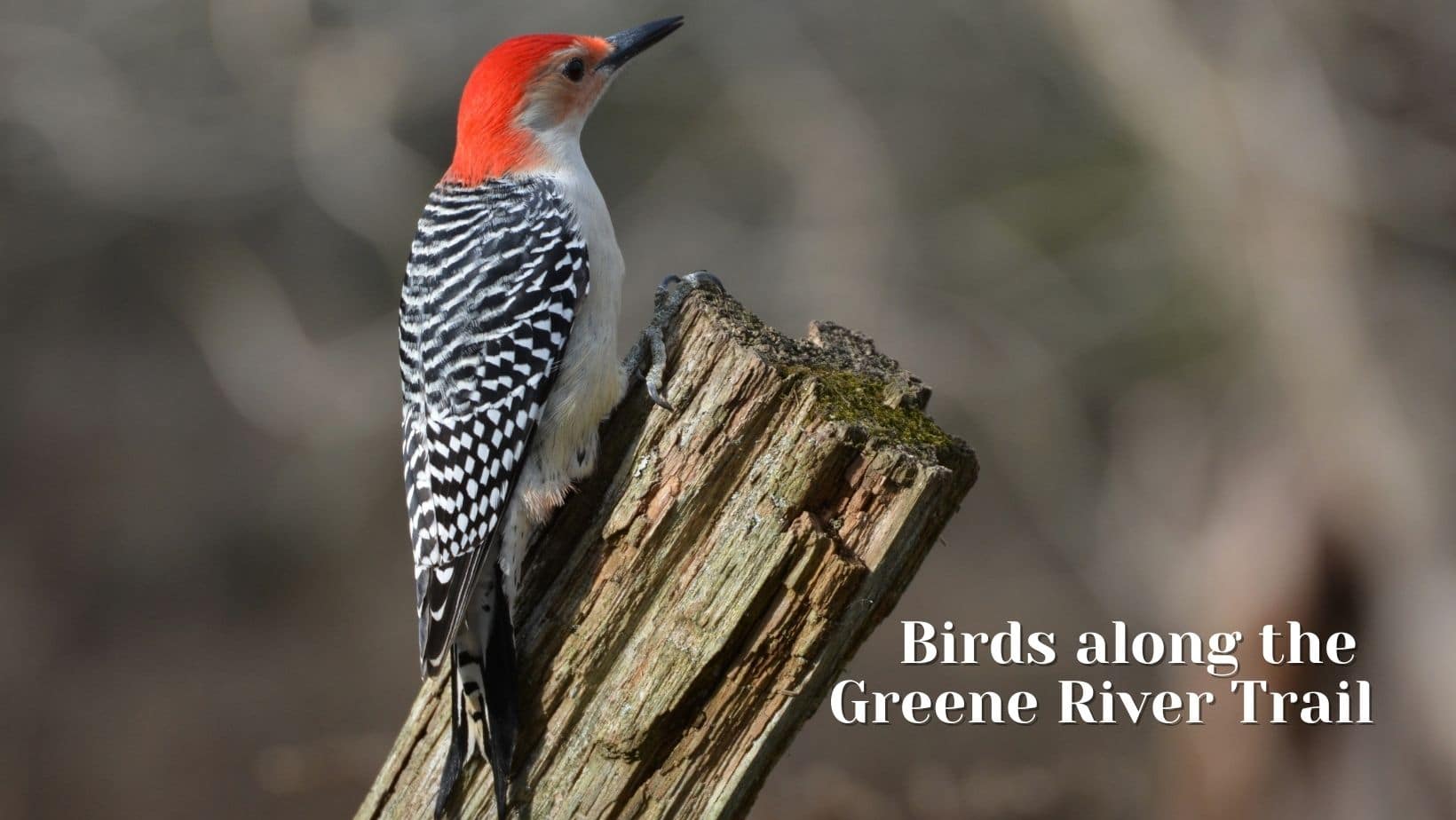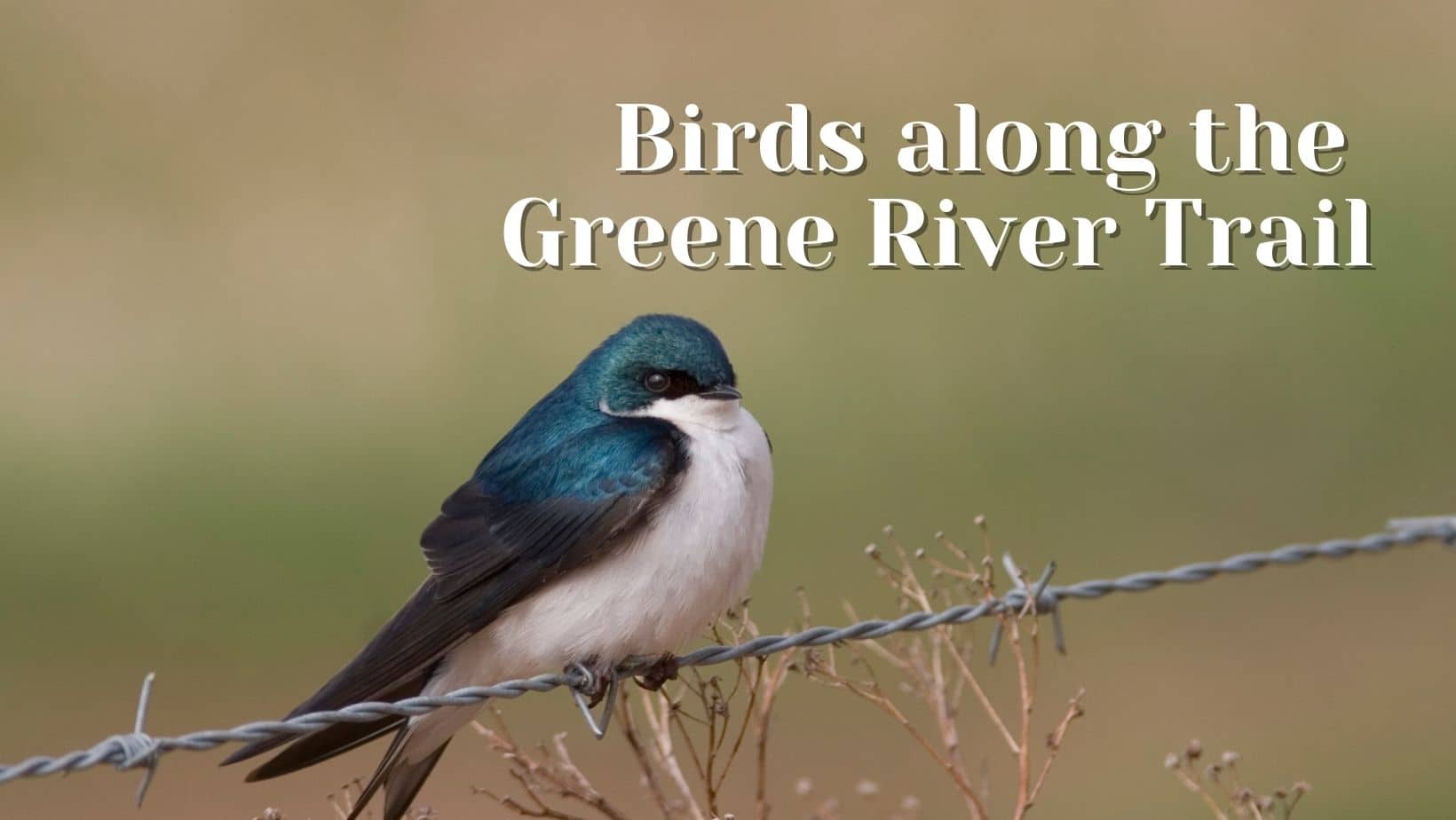Along the Greene River Trail
Birds
Yellow-Billed Cuckoo
The yellow-billed cuckoo (Coccyzus americanus) are slender, long-tailed birds that stay well hidden in woodlands making them hard to observe. Their croaking calls are often heard on humid afternoons during the summer and they enjoy eating tent caterpillars. They nest in dense trees and shrubs that are four to ten feet off the ground.
Eastern Bluebird
The eastern bluebird (Sialia sialis) can typically be found in open country with vegetation and large trees. The males are royal blue with a red-brown on their breast. The females are gray with a red-brown breast, and have blue highlights on the wings and tail. A large number of bluebirds nest in birdhouses created for them along “bluebird trails.”
Tree Swallow
The tree swallows (Tachycineta bicolor) are easy to find in open fields or marshes adjacent to bodies of freshwater. The glossy blue backs and white fronts are seen as they chase after flying insects with acrobatic maneuvers. They nest in tree cavities and other structures such as nest boxes or birdhouses. Their insect diet is supplemented with berries.
Red-Bellied Woodpecker
The red-bellied woodpecker (Melanerpes carolinus) are medium-sized woodpeckers common along main branches and trunks of trees. They forge for insects on the trees along with berries, nuts, and seeds. The nuts and seeds are stored in bark crevices to be eaten in the winter. Their loud, rolling calls are frequent during spring and summer.

Red-Tailed Hawk
The red-tailed hawk (Buteo jamaicensis) is the most common hawk in North America. They have broad rounded wings and a short tail. Small prey, such as rabbits and squirrels, are hunted by flying over fields and swooping down to capture prey with their talons.
Turkey Vulture
The turkey vultures (Cathartes aura) soar in the sky with their wings raised in a V-shape. The scavenger bird prefers open or partly wooded areas to search for dead animals and decaying vegetables. Unlike most birds, turkey vultures have a well-developed sense of smell to find carrion or decaying meat.
Great Horned Owl
The great horned owl (Bubo virginianus) with its natural colored plumage acts as camouflage. They are active at night with their yellow eyes and a deep hooting voice. The powerful predator can take down birds and mammals even larger than itself, but it also dines on smaller prey like mice and frogs. They are one of the most common owls in North America.
Belted Kingfisher
The belted kingfisher (Megaceryle alcyon) is common along streams across North America. The large head and hefty bill helps when it dives headfirst into the water to catch fish and crayfish near the surface. A wile rattling call is usually heard before you see a bird. They nest in burrows along earthen banks.
For more information on birds in our area, join the Ralph K. Bell Bird Club group on Facebook. Or learn more about North American Birds from the National Audubon Society.

About the Greene River Trail Signage Project
Greene County Tourist Promotion Agency completed this project in partnership with the Rivers of Steel Heritage Area. Funding was provided in part by a grant from the Pennsylvania Department of Conservation and Natural Resources, Bureau of Recreation and Conservation, administered by Rivers of Steel.
Special thanks to: Brice & Linda Rush, Danielle Nyland, Flenniken Public Library, Greene County Historical Society, Greene Connections, Advanced Masonry, Greene County Commissioners, Greene County Conservation District, and Greene County Department of Recreation.







